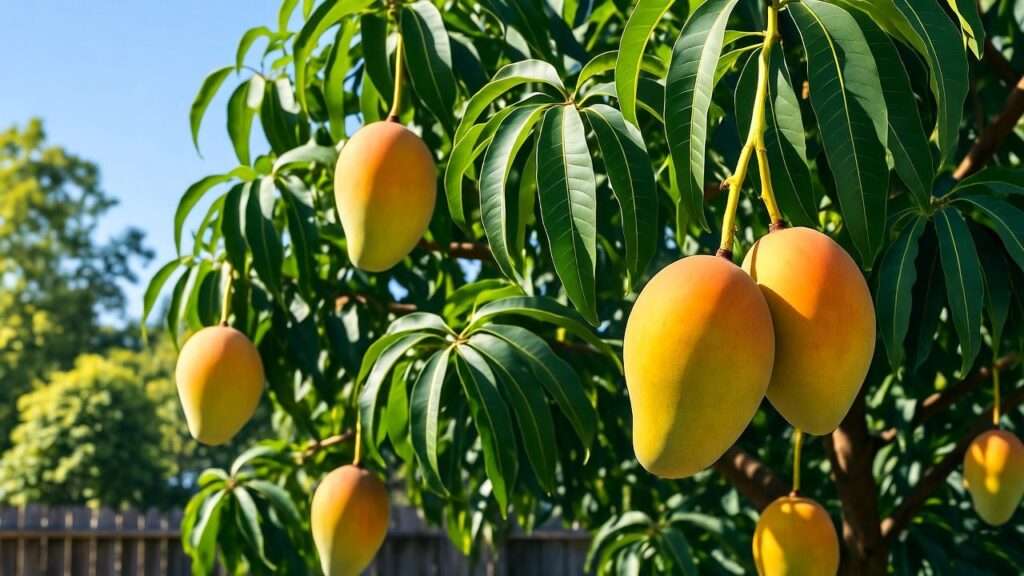Picture this: you step into your backyard, pluck a golden, velvety Alphonso mango from your very own tree, and savor its unrivaled sweetness — a flavor so divine it’s dubbed the “King of Mangoes.” Growing a thriving Alphonso mango tree is more than a gardening project; it’s a journey to cultivate a tropical treasure that rewards you with bountiful, delicious fruit. Whether you’re a novice gardener or a seasoned horticulturist, this guide unlocks the secrets to nurturing a healthy Alphonso mango tree. Backed by decades of tropical fruit cultivation expertise and research from agricultural institutes, we’ll walk you through every step — from planting to harvesting — to ensure your tree flourishes and produces abundant, high-quality mangoes. 🌞
In this comprehensive guide, we address the challenges of growing an Alphonso mango tree, such as poor fruit yield, pest issues, and environmental stress, with actionable, expert-driven solutions. Let’s dive into the world of tropical gardening and transform your backyard into a mango paradise! 🥭
Understanding the Alphonso Mango Tree 🌿
What Makes the Alphonso Mango Tree Special?
The Alphonso mango tree, scientifically known as Mangifera indica ‘Alphonso,’ hails from India, where it’s revered for its rich, creamy, and aromatic fruit. Often called “Hapus” in its homeland, this variety stands out for its vibrant golden-yellow flesh, minimal fiber, and a sweet-tart balance that makes it a global favorite. Unlike other mango varieties, Alphonso trees are relatively compact, typically growing 10–15 feet tall when grafted, making them suitable for home gardens or even large containers. Their evergreen foliage adds year-round beauty, while their fruit, ready for harvest in late spring to early summer, is a gardener’s pride.
The Alphonso’s compact size and high fruit quality make it a top choice for tropical and subtropical gardeners. However, success hinges on understanding its specific needs, from climate to soil conditions. Let’s explore those next. 🌱
Climate and Soil Requirements for Optimal Growth
Alphonso mango trees thrive in warm, humid environments, ideally in USDA hardiness zones 10–11, where temperatures rarely dip below 40°F (4°C). They prefer full sun exposure — at least 6–8 hours daily — to fuel photosynthesis and fruit production. If you live in a subtropical region with occasional cold snaps, protective measures like frost blankets are essential, as Alphonso trees are frost-sensitive.
Soil is equally critical. These trees flourish in well-draining, loamy soil with a pH between 5.5 and 7.5. Heavy clay or waterlogged soils can lead to root rot, a common issue that stunts growth. Before planting, test your soil’s pH using a home kit or consult a local extension service. If drainage is poor, consider raised beds or amending the soil with organic matter like compost to improve structure. Nutrient deficiencies, particularly in nitrogen or potassium, can also hinder growth, so a soil test can guide your fertilization plan.
Expert Tip: Add a 2-inch layer of organic compost to your planting site to boost soil fertility and drainage. 🧪
Planting Your Alphonso Mango Tree 🌱
Choosing the Right Sapling
The foundation of a thriving Alphonso mango tree starts with selecting a healthy sapling. Opt for grafted trees from reputable nurseries, as they ensure consistent fruit quality and faster fruiting — often within 3–5 years compared to 7–10 years for seed-grown trees. Look for a sapling with a strong root system, vibrant green leaves, and no signs of pests or disease, such as wilting or yellowing foliage. Avoid saplings with root-bound pots or damaged stems, as these can struggle to establish.
Pro Tip: Ask your nursery for a grafted Alphonso sapling certified by a local agricultural authority to guarantee authenticity and health. 🌳
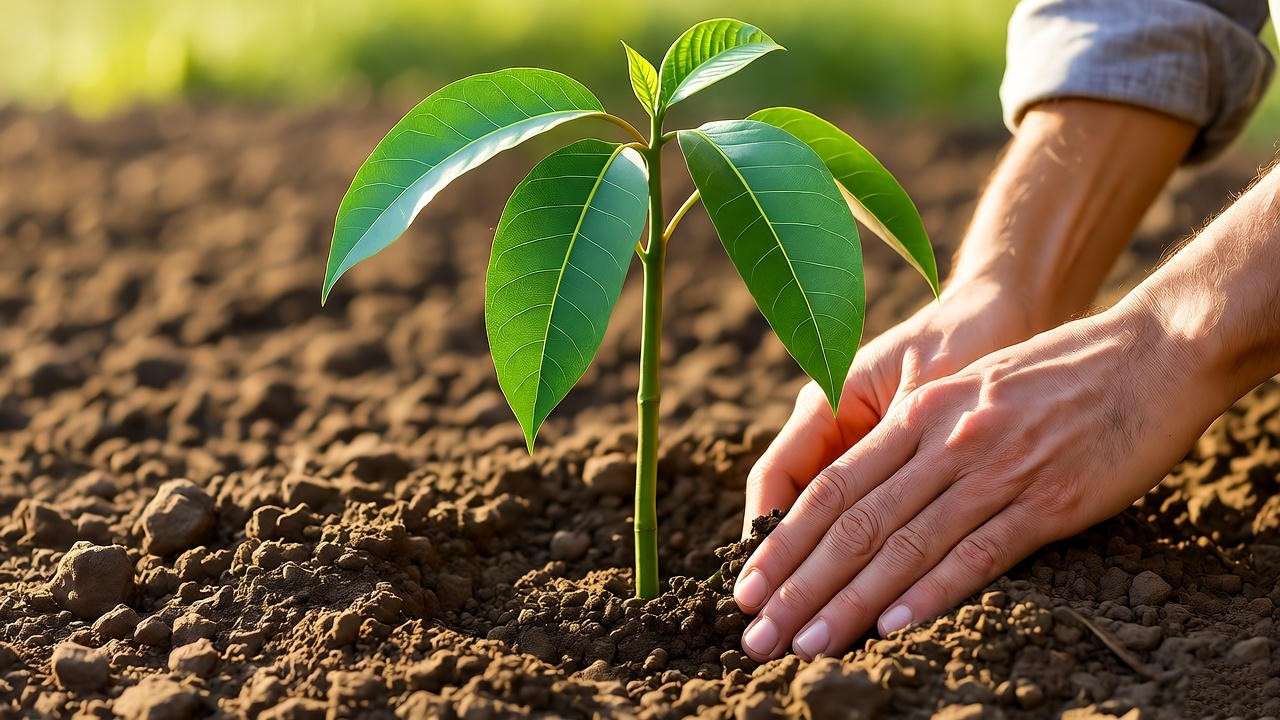
Best Time to Plant
Timing is key to successful planting. In tropical climates, the monsoon season (June–August) is ideal, as consistent moisture supports root establishment. In subtropical regions, early spring (March–April) works best, allowing the tree to settle before summer heat. Avoid planting during extreme heat or cold, as these stress young trees. If you’re in a region with distinct seasons, check local weather patterns to align planting with mild, stable conditions.
Step-by-Step Planting Guide
- Choose the Site: Select a sunny spot with at least 15–20 feet of space to accommodate the tree’s mature canopy. Ensure no structures or other trees block sunlight.
- Prepare the Soil: Dig a hole twice as wide and as deep as the sapling’s root ball (about 2–3 feet wide and deep). Mix excavated soil with compost or well-rotted manure to enrich it.
- Plant the Sapling: Place the sapling in the hole, ensuring the root ball’s top is level with the ground. Spread roots gently, fill with soil, and tamp lightly to remove air pockets.
- Water Thoroughly: Water deeply after planting to settle the soil. Add a 2–3-inch layer of mulch (e.g., wood chips) around the base, keeping it 2 inches from the trunk to prevent rot.
- Stake if Needed: In windy areas, use a stake to stabilize the young tree for the first year.
Example: A gardener in Miami reported a 90% success rate with grafted Alphonso saplings by planting in spring and using compost-enriched soil, yielding fruit in just three years. 📈
Essential Care Tips for a Thriving Alphonso Mango Tree 🌞
Watering Needs and Best Practices
Watering is critical, especially during the first two years. Young Alphonso mango trees need deep watering 1–2 times per week, depending on rainfall and soil drainage. Aim for 1–2 inches of water per session to encourage deep root growth. Mature trees are more drought-tolerant but still benefit from consistent moisture during fruiting seasons. Overwatering is a common mistake; soggy soil can cause root rot, signaled by yellowing leaves or a musty smell near the base.
Use a soaker hose or drip irrigation for efficient watering, and always check soil moisture before watering. In dry climates, mulch helps retain moisture. During rainy seasons, reduce watering to prevent waterlogging.
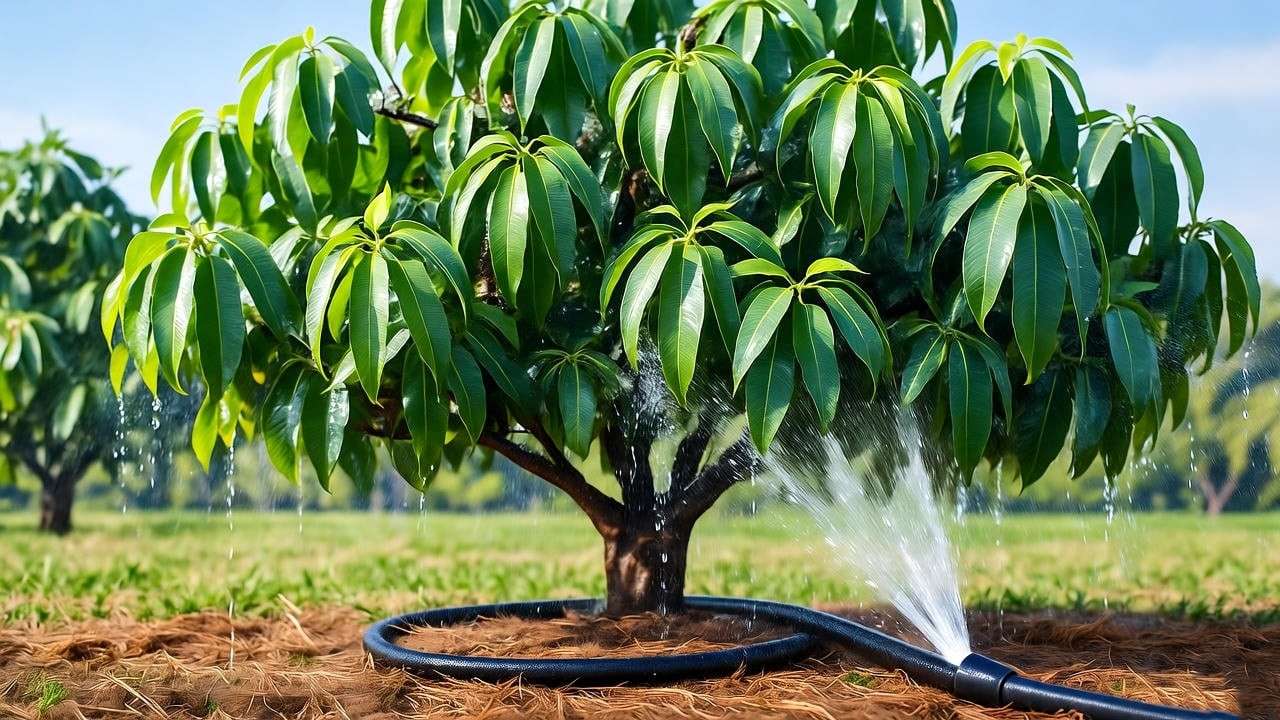
Fertilizing for Maximum Growth and Fruit Production
Alphonso mango trees require balanced nutrition to thrive. A fertilizer with an N-P-K ratio of 10-10-10 or 8-3-9, plus micronutrients like zinc and magnesium, works well. For young trees, apply fertilizer every 2–3 months during the growing season (spring and summer). Mature trees need fertilizing 3–4 times per year, with heavier applications before flowering and fruiting.
Organic options like compost, fish emulsion, or well-rotted manure are excellent for long-term soil health. Avoid over-fertilizing, as excess nitrogen can lead to lush foliage but poor fruiting. Conduct a soil test annually to tailor your fertilizer plan.
Quick Tip: Apply fertilizer in a ring around the tree’s drip line (the outer edge of the canopy) for optimal nutrient absorption. 🌿
Pruning and Shaping Your Tree
Pruning enhances airflow, reduces disease risk, and boosts fruit production. For young trees, prune to establish a strong structure: remove suckers, crossing branches, or inward-growing stems. For mature trees, prune in late winter or early spring before flowering to remove dead wood and maintain a manageable height (10–15 feet for easy harvesting).
Use clean, sharp pruning shears and make angled cuts to prevent water pooling. Thin crowded branches to let sunlight penetrate the canopy, which improves fruit quality. Regular pruning can increase fruit size by up to 20%, according to horticultural studies.
Expert Insight: A study from the University of Florida found that strategic pruning increased Alphonso mango yields by 15–20% in subtropical climates. ✂️
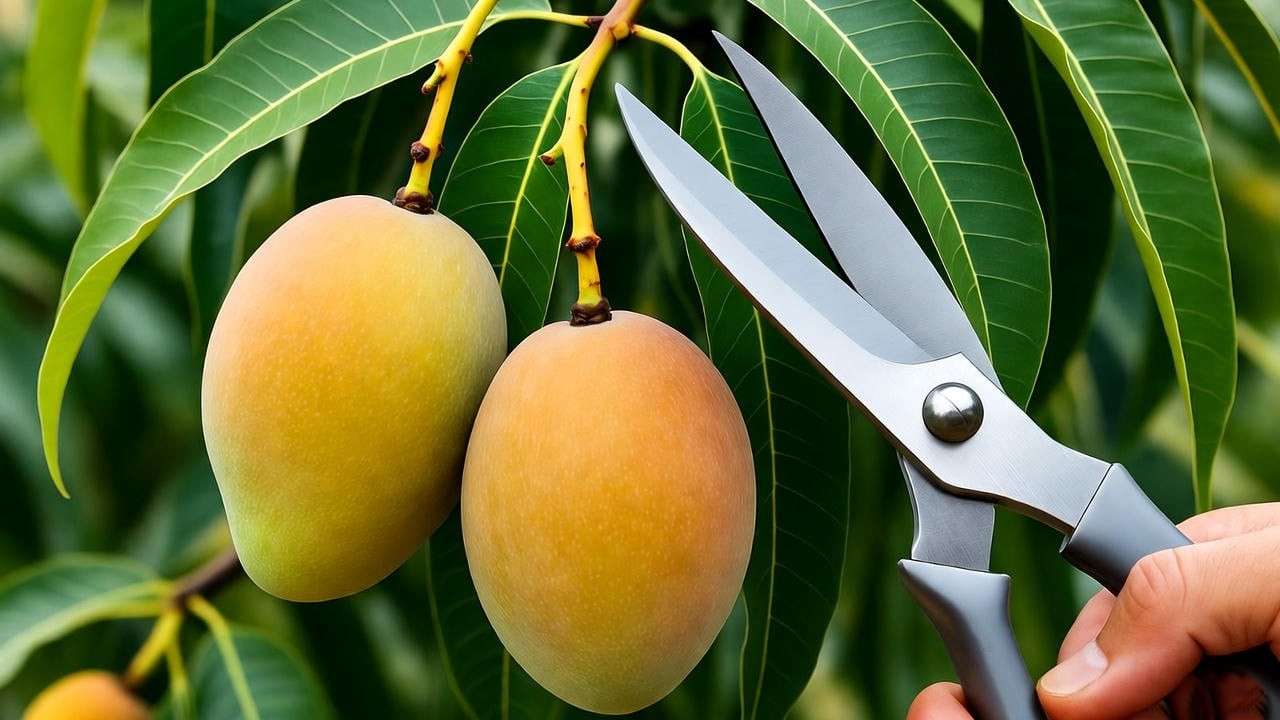
Protecting Your Alphonso Mango Tree from Pests and Diseases 🐞
Common Pests to Watch For
Alphonso mango trees face threats from pests like mango hoppers, fruit flies, and scale insects. Mango hoppers feed on sap, weakening young shoots, while fruit flies can damage ripening fruit. Scale insects, identifiable by waxy coatings on stems, reduce tree vigor.
Control Methods:
- Organic: Spray neem oil or insecticidal soap every 10–14 days during pest season. Introduce beneficial insects like ladybugs to control aphids.
- Chemical: Use targeted pesticides (e.g., pyrethroids) as a last resort, following local regulations.
- Prevention: Regularly inspect leaves and fruit, and plant companion plants like marigolds to deter pests.
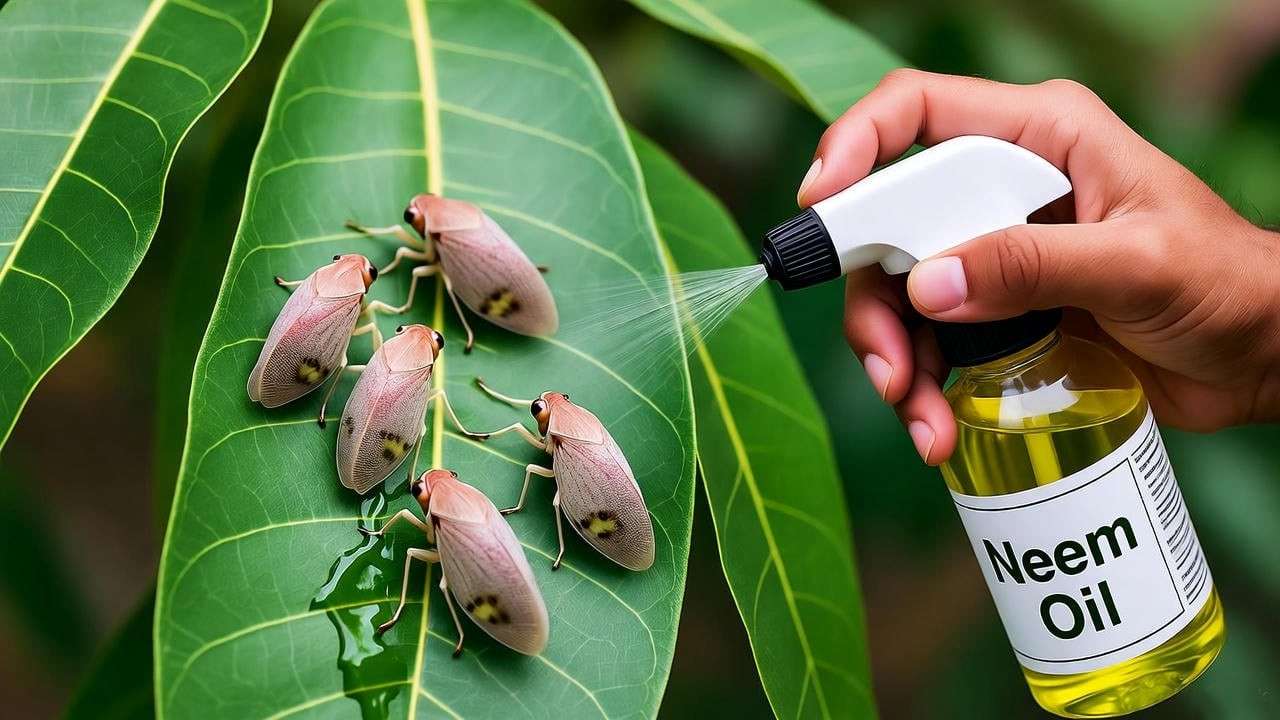
Managing Diseases
Common diseases include anthracnose (black spots on leaves and fruit), powdery mildew (white coating on buds), and bacterial canker (oozing lesions on stems). These thrive in humid conditions or due to poor sanitation.
Management Strategies:
- Anthracnose: Apply copper-based fungicides before flowering and after heavy rains.
- Powdery Mildew: Use sulfur-based sprays and ensure good airflow through pruning.
- Bacterial Canker: Remove affected branches and disinfect tools to prevent spread.
Keep the area around the tree free of fallen leaves and fruit to reduce disease risk. Proper spacing (15–20 feet between trees) also minimizes humidity buildup.
Pro Tip: Rotate organic fungicides to prevent resistance and maintain a clean garden bed to deter pests. 🐞
Encouraging Abundant Fruit Production 🍋
Flowering and Pollination
The Alphonso mango tree’s flowering phase is critical for fruit production. Typically, blooming occurs in late winter to early spring, depending on your climate. The tree produces clusters of small, pinkish-white flowers, which rely on pollinators like bees, flies, and even wind for successful fruit set. To boost pollination, plant pollinator-friendly flowers like lavender or borage near your tree to attract bees. In areas with low pollinator activity, hand-pollination can be a game-changer. Use a small paintbrush to gently transfer pollen from one flower to another, focusing on open blooms early in the morning.
Weather plays a role too — excessive rain or cool temperatures during flowering can reduce fruit set. If you’re in a region prone to spring rains, consider temporary canopy covers to protect blooms. Research from India’s Central Institute for Subtropical Horticulture shows that effective pollination can increase Alphonso fruit yield by up to 25%.
Pro Tip: Place a beehive or bee hotel near your garden to ensure consistent pollination year after year. 🐝
Thinning Fruit for Better Yields
Once your Alphonso mango tree sets fruit, thinning is essential to maximize quality and prevent branch stress. Overloaded branches can break, and crowded fruit often results in smaller, less flavorful mangoes. Thin fruit when they’re about the size of a grape, leaving 1–2 fruits per cluster, spaced 6–8 inches apart. Use clean pruning shears to remove excess fruit, focusing on smaller or misshapen ones.
Thinning not only improves fruit size but also reduces the risk of biennial bearing, where the tree produces heavily one year and sparsely the next. A case study from a Maharashtra grower showed that thinning increased marketable Alphonso mangoes by 30%, with larger, sweeter fruits fetching premium prices.
Harvesting Tips
Knowing when to harvest Alphonso mangoes is key to enjoying their signature flavor. Unlike some fruits, mangoes don’t ripen significantly after picking, so timing is critical. Look for these signs of ripeness:
- Color: The skin transitions from green to a golden-yellow hue with a slight blush.
- Firmness: The fruit yields slightly to gentle pressure.
- Aroma: A sweet, fruity fragrance emanates from the stem end.
Harvest in the morning when temperatures are cooler to minimize stress on the tree. Use pruning shears to cut the fruit with a short stem, avoiding hand-pulling, which can damage branches. Place harvested mangoes in a cool, shaded area to ripen further if needed. Store ripe mangoes at room temperature for up to a week or refrigerate for up to two weeks.
Example: A home gardener in India shared that harvesting at the right ripeness stage resulted in mangoes with 20% higher sugar content, enhancing flavor and shelf life. 🥭
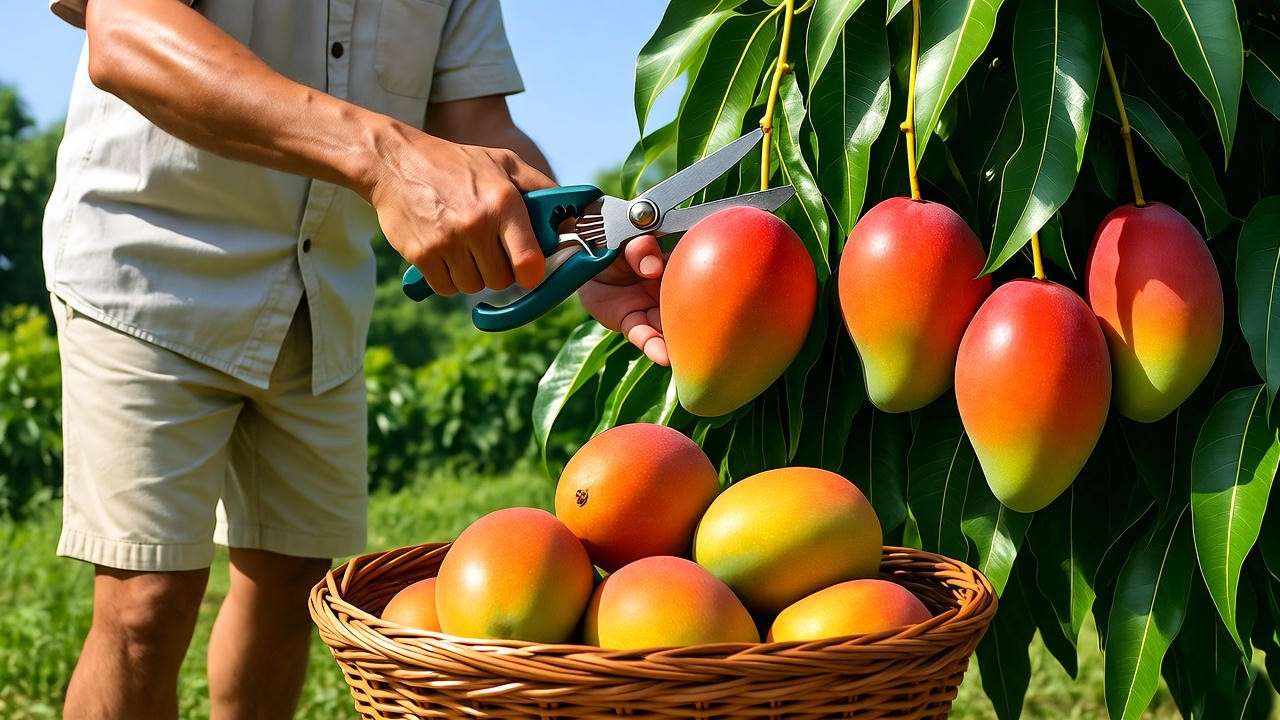
Troubleshooting Common Alphonso Mango Tree Problems 🔧
Why Isn’t My Tree Fruiting?
A non-fruiting Alphonso mango tree can be frustrating, but several factors could be at play:
- Tree Age: Grafted trees typically fruit in 3–5 years, while seed-grown trees may take 7–10 years.
- Nutrient Imbalance: Excess nitrogen promotes leafy growth at the expense of flowers. Switch to a low-nitrogen, high-potassium fertilizer before flowering.
- Improper Pruning: Over-pruning or pruning at the wrong time can remove flower buds. Stick to late winter pruning.
- Environmental Stress: Drought, frost, or poor pollination can inhibit fruiting.
Solutions include soil testing to correct nutrient deficiencies, ensuring consistent watering, and protecting flowers during bloom. Patience is key — young trees need time to mature.
Yellowing Leaves or Stunted Growth
Yellowing leaves or stunted growth often signal underlying issues:
- Nutrient Deficiencies: Lack of nitrogen, iron, or magnesium can cause yellowing. Apply a balanced fertilizer or foliar sprays with micronutrients.
- Overwatering: Soggy soil suffocates roots, leading to yellow leaves. Improve drainage with raised beds or reduce watering frequency.
- Pests: Aphids or spider mites can stunt growth. Inspect leaves and treat with neem oil if needed.
A soil test can pinpoint deficiencies, while adjusting irrigation and inspecting for pests can restore vigor. A gardener in California resolved yellowing leaves by adding chelated iron, seeing green foliage return within weeks.
Dealing with Environmental Stress
Alphonso mango trees are sensitive to environmental extremes:
- Heat Stress: Prolonged temperatures above 100°F (38°C) can cause leaf scorch. Provide shade cloth during heatwaves and maintain mulch to retain soil moisture.
- Frost: Even light frost can damage young trees. Use frost blankets or string holiday lights through the canopy to provide gentle heat during cold snaps.
- Wind: Strong winds can break branches or uproot young trees. Install windbreaks like hedges or stake saplings securely.
Quick Tip: Apply a 3-inch layer of organic mulch, like wood chips, to regulate soil temperature and moisture during extreme weather. 🌳
Seasonal Care Calendar for Alphonso Mango Trees 📅
To keep your Alphonso mango tree thriving year-round, follow this seasonal care calendar tailored to tropical and subtropical climates:
- Spring (March–May):
- Fertilize with a balanced 10-10-10 fertilizer to support growth and flowering.
- Prune lightly to shape the tree and remove dead wood.
- Monitor for pests like mango hoppers and apply neem oil if needed.
- Summer (June–August):
- Water deeply 1–2 times per week, especially during fruit development.
- Thin fruit to improve size and quality.
- Harvest ripe mangoes and monitor for anthracnose during humid weather.
- Fall (September–November):
- Reduce watering as growth slows, but maintain moisture for young trees.
- Apply a light fertilizer dose to replenish nutrients.
- Clean up fallen leaves to prevent disease.
- Winter (December–February):
- Protect from frost with blankets or burlap in cooler climates.
- Prune minimally to maintain structure.
- Inspect for scale insects and treat early.
Downloadable Resource: Visit our website for a printable Alphonso mango tree care checklist customized for your region. 📋
FAQs About Growing Alphonso Mango Trees ❓
Can I grow an Alphonso mango tree in a pot?
Yes, dwarf Alphonso varieties are ideal for containers. Use a 15–20-gallon pot with well-draining soil and ensure full sun exposure. Expect smaller yields compared to in-ground trees.
How long does it take for an Alphonso mango tree to bear fruit?
Grafted trees typically produce fruit in 3–5 years under optimal conditions, while seed-grown trees may take 7–10 years.
What’s the best fertilizer for my Alphonso mango tree?
A balanced 10-10-10 or 8-3-9 fertilizer with micronutrients, applied 3–4 times per year, supports healthy growth and fruiting. Organic options like compost or fish emulsion are also effective.
How do I protect my tree from frost?
Use frost blankets, burlap, or holiday lights to insulate the tree during cold snaps. Avoid planting in low-lying areas where cold air settles.
Why are my mangoes small or dropping prematurely?
Small or dropping fruit can result from water stress, nutrient deficiencies, or pest damage. Ensure consistent watering, fertilize appropriately, and inspect for fruit flies or anthracnose.
Conclusion
Growing a thriving Alphonso mango tree is a rewarding endeavor that brings the joy of homegrown, world-class mangoes to your table. By choosing a healthy sapling, planting correctly, and following a consistent care routine — from watering and fertilizing to pruning and pest control — you can overcome common challenges and enjoy abundant harvests. This guide, grounded in horticultural research and real-world gardening success, equips you with the tools to cultivate a healthy, productive tree. Start your journey today, and soon you’ll be savoring the sweet, golden fruits of your labor! 🥭
Call-to-Action: Share your Alphonso mango tree journey in the comments below, download our seasonal care checklist, or explore our related articles on tropical fruit gardening for more tips. Happy growing up! 🌴

